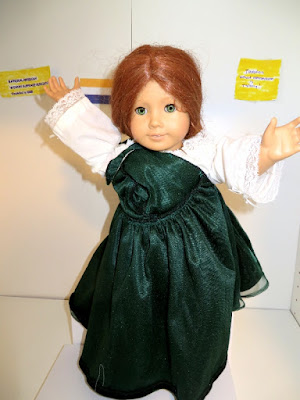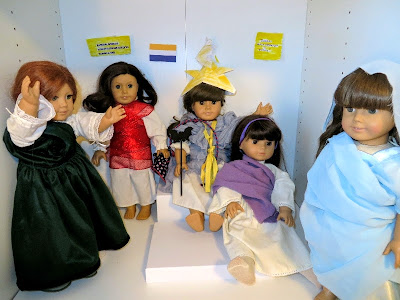Celebrating the 19th Amendment:
Time Travel to the Women's Suffrage Parade in 1913
Liberty makes her "lyrical" entrance to the "Triumphal March" of Verdi's Aida. Liberty, clad in crimson silk, moves across the stage "a flying figure, unfettered and free."
Liberty dancing with twisting and turning movements interprets the music concerning a female slave and her struggle for liberty. Liberty dances "triumphant and free."
Peace, in a gown of silver and white, releases a dove from the top of the steps. (the tune is the overture from Wagner's Lohengrin). She descends with her attendants who hold olive branches and cornucopias
The final allegorical figure is Hope. Like a "bright spirit" she dances between the Treasury's columns to "Elsa's Dream" from Lohengrin. This music portrays a woman's sentiment of hope amid life and death circumstances.
When she finishes, Hope will be joined by rainbow-hued attendants to the tune of Dvorak's "Humoreske." Then a troop of 50 children will come out holding balloons. Together they will all dance "merrily" to Mendelssohn's "Spring Song" and greet Columbia at center stage.
The rainbow symbolizes a better tomorrow for women. "After a storm comes sunshine and the indication of a beautiful day." Hearing the approach of the Procession, summons to her side, Justice, Charity, Liberty, Peace and Hope, to review with her this "new crusade" of women. The cast assembles, the band plays "America" to form the final tableau.
Time will tell if we are successful at getting the vote. Thank you to the professional actresses and dancers who participated in the tableau. We'll see you at the next march!
(See more in the original archival photos)
Woman Suffrage Postcard 1913 Smithsonian Institution
National Women's Party Photograph Collection (Columbia)
National Women's Party Photograph Collection (Liberty and Attendants)
and original newspapers
Read the specific details that inspired this tableau and the previous sections
Annelise K. Madsen, Columbia and Her Foot Soldiers: Civic Art and the Demand for Change at the 1913 Suffrage Pageant-Procession, Winterthur Portfolio, Vol. 48, No. 4 (Winter 2014), pp. 283-310 (scholarly article)
Original source photographs:
Suffragette Parade Pennsylvania Avenue Stereoscope card at the Library of Congress
Head of Suffrage Parade in Washington, DC March 3, 1913 at the Library of Congress
The 1913 Women's Suffrage Parade The Atlantic
Read more:
Women's Suffrage 100 Massachusetts film Looking Back, Marching Forward
Rightfully Hers: American Women and the Vote National Archives
Crusade for the Vote National Women's History Museum
Symbols of the Women's Suffrage Movement National Park Service
African-American Women and the 19th Amendment National Park Service
Marching for the Vote: Remembering the Woman Suffrage Parade of 1913 Library of Congress
Parading for Progress National Women's History Museum
Harriet Stanton Blatch New York State Museum
She Resisted: Strategies of Suffrage PBS American Experience
The Movement as a Mosaic: Alice Paul and Woman Suffrage National Archives
The Vote and the Adirondack's Own Inez Milholland PBS American Experience
Creating Icons: How We Remember the Woman Suffrage Smithsonian National Museum of American History
The Long Battle for Women's Suffrage Smithsonian Magazine
Votes for Women: A Visual History Brandywine River Museum of Art
Original newspaper article on the parade from the San Francisco Chronicle





No comments:
Post a Comment